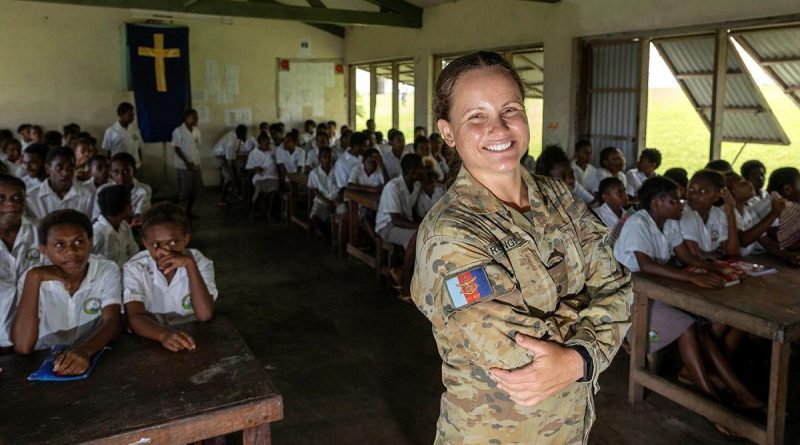School visit in Vanuatu

Telecommunications riggers from 127 Signals Troop and the Vanuatu Police Force visited Windua High School in South West Bay, Malekula, during phase two of the Vanuatu Government National Emergency Radio Network.
CAPTION: Remote Installation Commander Lieutenant Amy Rowlings visits Windua High School in South West Bay. Story and photo by Corporal Olivia Cameron.
Remote installation commander Lieutenant Amy Rowlings said for a lot of children it was the first time they had seen ADF personnel.
“Visiting schools opened up a dialogue and encouraged the kids to ask questions about the project. It also provided the ADF the opportunity to learn more about the people and culture,” Lieutenant Rowlings said.
“Seeing us working in partnership with the Vanuatu Police Force gave them greater insight into the Vanuatu-Australia Defence Cooperation Project and how this project will enable the Vanuatu Police Force to deliver essential services across the archipelago.”
Riggers brought along tools of the trade to keep the kids interested and help break down language barriers.
Delivered by the ADF and the Vanuatu Police Force over a three-year period under the Vanuatu-Australian Defence Cooperation Program, the Vanuatu Government National Emergency Radio Network will increase Vanuatu’s disaster preparedness and response capability, and support an enhanced police presence across the Vanuatu archipelago.
The remote installation team have so far visited Epi, Ambae, Maewo, Pentecost and Malekula Island to install solar panels and radio masts while engaging with the local community.
Remote team leader telecommunications rigger Corporal Bill Maloney said a key focus was the installation of the emergency high frequency (HF) capability at the remote island police posts throughout the archipelago.
“The HF radio delivers a robust communication network in order to support Vanuatu Police Force emergency response capabilities during a natural disaster,” Corporal Maloney said.
“It also gives police the means to communicate with remote communities without the use of expensive and sometimes unreliable cellular networks.”
.
.

.
.





